For Latinos in the United States, connecting to our culture is not always an easy feat. Whether it’s because we’re struggling to navigate two worlds simultaneously or we’re a generation (or more) removed from Latin America, it can be difficult to find exactly where we fit in. It’s a tough task for anyone, but especially for those who rarely see their Latin American countries represented. This has certainly been the case for US-based Central Americans, who are either cast in a negative light or unacknowledged.
The emergence of the small but mighty Central American Twitter has helped bring the beauty of Honduras, Nicaragua, Guatemala, Belize, Panama, and Costa Rica to the forefront. And it’s their important work that got us wondering how creatives use the isthmus as a source of inspiration.
Below, read how seven Central Americans – all based in the United States – have put in time to learn about their culture and produced richer work as a result.
Yeiry Guevara
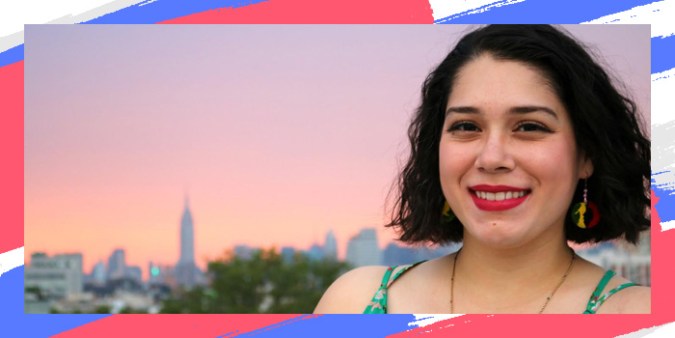
Growing up, her parents didn’t talk about the US-backed civil war that plagued El Salvador and that eventually forced them to move to the same country that made the Central American country increasingly dangerous. That, coupled with the fact that she didn’t know many other Salvadorans during her formative years meant that Houston-born writer and photographer Yeiry Guevara didn’t entirely understand what it meant to be Salvadoran American as a child. It wasn’t until college (Yeiry majored in business and Latin American Studies) that she was able to read about the country that her family left decades before. The texts didn’t necessary provide lengthy explanations – most of the time they were just short paragraphs – but they offered Yeiry a sense of belonging. “That’s me,” she remembers telling herself.
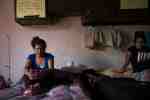
Now, it’s Yeiry who’s putting pen to paper and capturing what it’s like to be Salvadoran. She’s written most of her life, starting with the diary she kept at age 10, but it’s only recently that she’s invited others to read her work. In 2013, after a trip to El Salvador, she wrote The Savior, a Spanish- and English-language zine “where family and memory intersect in our tiny El Salvador.”
“I’ve had enough life experience, enough education to be able to fully articulate and express myself in a way that feels right.”
She released the zine online this year, and saw it take off. Central American Twitter – a group that has seen a rise in the last year or so – embraced it. Others, who like her have yearned for more content about El Salvador, needed something like The Savior.
Guevara has always written about her culture in one way or another, but now she’s doing it in a much more purposeful way. Now, she’s up to the task.

“I don’t think there’s actually a juncture in time when that happened right, because I feel like it’s always been such a strong part of my identity, whether I recognized it or not,” she says. “…[But] I finally have the language to express that. I grew up speaking Spanish and then learned English through school. And so language has always been something like a very powerful tool to be able to frame the way you see the world and make sense of the world. I think I’m finally at an age where I’ve had enough life experience, enough education to be able to fully articulate and express myself in a way that feels right. It doesn’t like I’m code switching or it doesn’t feel like imposter syndrome that you’re not enough of here, no sos de aquí ni de alla.”
Check out The Savior, her mini zines about growing up Salvadoran, and her mom’s crafts on her site.
Isha Sumner

Growing up among Honduras’ Garifuna community, Isha Sumner did not have to work to stay connected to her culture. But upon moving to Houston and later New York as a teenager, the actress and stylist didn’t know where she fit in. And others – who questioned how she could be both Black and Honduran – didn’t make it any easier. Eventually, she found New York City’s sizable Garifuna community, but she realized that whenever she wanted to eat certain foods, she’d have to go to her mother’s house. “My mom, she’s an amazing cook, and I always say she is the inspiration behind Weiga, Let’s Eat, because I see her constantly utilizing her kitchen to bring people in,” she says.
In the Bronx, the Garifuna community has gathered on special occasions to serve these foods, but New York – a place known for its expansive culinary scene – does not have a Garifuna restaurant. That realization made her wonder if she could at least buy a cookbook filled with these recipes. She found some, mostly from Belize, but because they didn’t have images, she couldn’t even envision the foods. That’s when she decided to make her own.
“I knew how to make tortillas, coconut tortillas, from scratch, but sometimes the consistency wasn’t here,” she says. “Sometimes, my tortilla would be like a little too hard or it was missing a little bit more salt. And I was like, ‘Oh my God, making a recipe book would actually help us avoid all these problems.'”
“I see [my mom] constantly utilizing her kitchen to bring people in.”
She turned to her mother for help, but as many Latinos know, her mother didn’t use any measurements for the recipes. She knew by feel, so Isha, equipped with measuring cups, began her journey to document these important recipes. “I spoke to my mom, and she was like, ‘No, I don’t cook with recipe,'” she says. “And I said, ‘Mom, I know. I understand. Just cook like you normally cook, but before you put any ingredient into whatever it is that you’re cooking, I’m gonna stop you I’m gonna measure it.'” And that’s how she managed to amass a collection of recipes and become a better cook in the process. By returning to Honduras, she’s also ensured that the book accurately captures Garifuna cuisine.
The book hasn’t come without its own set of hurdles. Several times, she thought she was at the finish line, only to learn there was a new fire to put out. But she remains committed to finishing the book, because she doesn’t want younger generations of Garifuna living in the United States to go without this invaluable resource.
Check out Isha’s Facebook page, Weiga, Let’s Eat, here.
JR Mahung
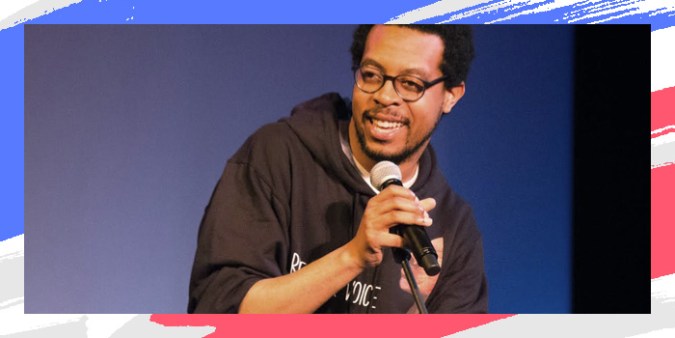
Five years ago, Boston-based poet JR Mahung wrote Like Waters, a chapbook dealing with mental health and how it affects romantic love. He considers it an important first step toward writing about his Blackness, Caribbeanness, and Belizeanness. That, like many of his other experiences, have ultimately led him to where he is now: writing and celebrating all facets of his identity. Bouncing around between the South Side, Bronzeville and other Chicago suburbs as a kid, Mahung grew up in the same place that many important black artists – including Gwendolyn Brooks, Ida B. Wells, and Sam Cooke – made their marks. “I grew up knowing these folks as neighbors from a different time,” he says. “A sort of lineage of folks who wanted to speak to their communities in a way that I feel accountable to in my own work.”
“My Belizean heritage is important to me because it informs my life and my perspective so much.”
Initially, he set out to become a musician. Music is, after all, the way he become introduced to the world of poetry. Listening to his grandma’s punta and reggae tapes, his dad’s country music, and his sisters’ hip hop taught him how “language could be used to create images and build worlds.”
Then, Yasiin Bey’s verse on Black Star’s “Respiration” inspired him to write raps and join a band. He even recorded a mixtape before finding his true calling, poetry. But he still incorporates tenets of hip hop, including bringing his culture to the forefront.
“My Belizean heritage is important to me because it informs my life and my perspective so much,” the middle school teacher says. To his knowledge, his great grandfather was Chinese, his great grandmother was Maya, and most of his other ancestors are Garifuna. “These are all people who 1. Are not really acknowledged in the United States’ understanding of the Caribbean and 2. Are further marginalized in their homes. It feels important for me to write my family, so I can see my family. And so my family can see themselves.”
The first time he read a book by a Belizean writer was just two years ago. The first time he read something written completely in Belizean creole was last year when he came across Ingrid Renau’s Tears No Have to Fall. “I cried to myself to myself on a bus after I read the thing – a bit ironic I suppose,” he says. “That moment it became so apparent that I had just read a story I had ached for but never demanded or sought out. I didn’t believe it possible to read about Belizeans in our own language and part of that was because I didn’t see us as important enough. I’m trying to write that idea away.”
Check out JR’s Like Water here.
Vero D. Orozco
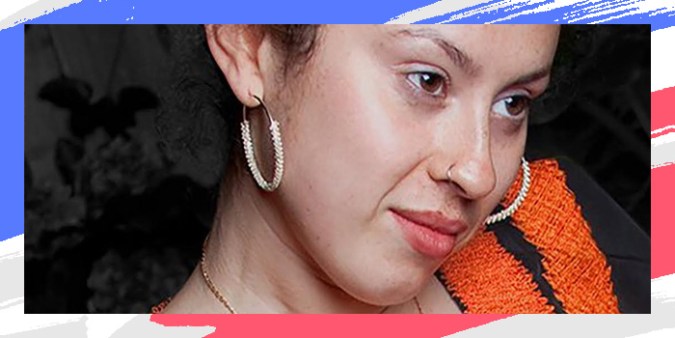
San Francisco native Vero D. Orozco started off making very political work. As the child of immigrants growing up among other first-generation Americans, she became invested in fighting for and giving back to her community. And though this is still present in what she does – she is after all, a grad school student in Chicago working to draw more attention to the plight of first-generation Americans – learning more about her Nicaraguan heritage prompted a change in her approach. Where she first focused on in-your-face political statements, she now creates more abstract pieces.
“My family was very much like, ‘We’re gonna move to the United States. We’re gonna try to assimilate to this culture.'”
After graduating college, her professor, Juan Fuentes, asked her to take over an archives section at Mission Grafica, a printmaking component of the Mission Cultural Center for Latino Arts. This led her to finding political posters created in the 1980s in response to the civil wars plaguing Central America and the violence that intensified through the United States’ interventionism. Her mother moved to the US to escape the instability that had gained a foothold in Nicaragua before and after the Sandinistas overthrew Anastasio Somoza Debayle’s government in 1979. Seeing those posters made her realize that even though her family moved to get away from this turmoil, they couldn’t escape it even in their new home of San Francisco.
“It also made me think about how it was for my family to have moved here to San Francisco and for all these people to be protesting the war they had just left, because my family was very much like, ‘We’re gonna move to the United States. We’re gonna try to assimilate to this culture. And we’re going to forget what happened in Nicaragua. We’re gonna forget about the Sandinistas.’ And then for them to have to come and it be in their faces, that must have been really hard for them,” she says. “They were going it. My mom was going through it firsthand. So for her to come here and Americans to have the privilege to protest something that’s not right in their faces, I’m just curious how was that for my family.”
That’s when she realized that she didn’t want to add to that trauma – many US-born Central Americans know too well that their families don’t like discussing what happened during this era – so her art style changed. This doesn’t mean that she isn’t in tune with her culture or its dark history, but she wants to help her community heal.
Nearly 40 years have passed since her mother left Nicaragua, and Central America is still overwhelming portrayed through brutal images in the United States. Stories about the isthmus mostly revolve around gang violence and poverty – which are necessary to understand these countries but don’t tell the full picture. That’s why when a group of Nicaraguan DJs decided to host a Nicoya party called Fritanga, she decided to create art that featured the foods you’d come across at a fritanga. And that’s how she wants to uplift her community, by giving them a chance to see themselves in a different light.
Check out Vero’s work on her website.
Crystal Latimer
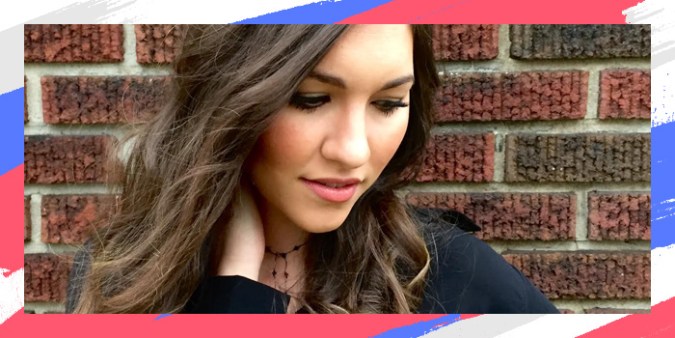
As a child growing up In Western Pennsylvania, Crystal Latimer didn’t feel connected to her Costa Rican heritage. Her mom, who arrived from the Central American country in the 1980s, focused on acclimating to the United States, which meant that Crystal didn’t really grow up knowing that part of her identity. But over the last few years, the painter has made it her mission to reconnect to her roots, and it’s influenced her work along the way.
One of the easiest ways to see is through her use of the floralesque and geometric carreta designs that decorate ox carts, which have traditionally transported coffee from coast to coast in Costa Rica. Nowadays, it is a dying art form, and something she hopes her art will draw attention to. The vibrant colors she uses are also a result of her visits to Costa Rica. “Whenever I think about my home there in Costa Rica and my family, I think about all the colors that I see and the rich, vibrant hues,’ she says. “My cousin … his house is like a bubblegum pink and then my grandma’s house has always wavered between this turquoise and this jade color, and those are two colors that come up really often in my work.”
“I feel like in the past, [my mom] always thought that we were going to be ashamed of [our Costa Rican heritage].”
Though Crystal has only spent the last few years becoming immersed in this culture – including dedicating herself to learning Spanish – she always had one view of Costa Rica growing up. She visited as a child a couple of times; now as an adult, she goes back as often as possible. In that time, she’s seen parts of the culture become more Americanized. Her work also explores that relationship and is a critical look at Western influence over Costa Rica and other parts of Latin America. “I think [Costa Rican] culture is the one that’s so unique and inspiring and needs to be celebrated,” she adds. “And whenever I visit there, and I see it being westernized so dramatically every time I go back, I don’t know, I want to reach back to their roots and celebrate those more.”
Becoming knowledgeable about her background has taken a lot of research and curiosity. But it’s paid off in more ways than one. Not only does she now fully understand who she is, it’s also something she and her mom have bonded over. “I feel like in the past, she always thought that we were going to be ashamed of that part. Maybe it was more of the time that she came over as well, maybe it was something that was not received well,” she says. “But I think she’s so happy to see that we’ve really latched on and wanted to celebrate her heritage and in doing so, she’s been back so many more times – with me and without me – to really keep up that connection.”
Check out Crystal’s art on her website.
Mike Alfaro
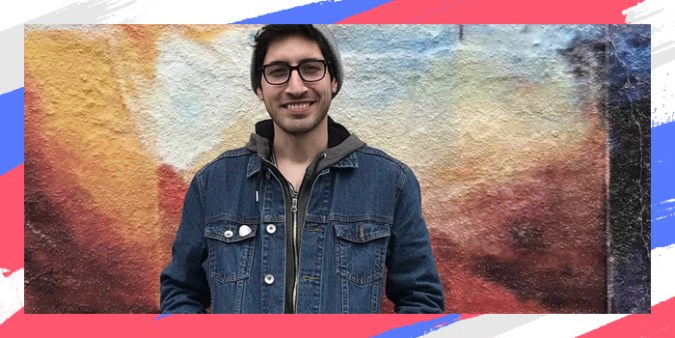
With his Millennial Lotería, Mike Alfaro created a set of cards that speaks to his generation, but also draws attention to Central America’s relationship with the game. Lotería, which is beloved by the Mexican community, is something he grew up playing at ferias in Guatemala. To him, it represents family and his childhood. This is just one small way that Mike has attempted to bring light to his culture. Drawing from his own experiences, his next project aims to do that in an even bigger way.
At 17, Mike arrived to the United States for college. Even though he was a in a new country, he didn’t find it difficult to navigate life in Orange County. Mostly, it surprised him that others had such a deep misunderstanding of Guatemala. He remembers going to Quiznos and having others trying to explain how to order at the sandwich chain. “People were surprised that I had internet in Guatemala, and so I think in a way, it [was] sort of culture shock [to me] how much people didn’t know about Central America, and particularly Guatemala.” As a matter of fact, many thought that Guatemala was part of Mexico, so he also found himself educating them about his native country.
“It’s really time for Central Americans to work together to uphold our culture and bring it to the masses.”
For many living in the United States, Latin American immigrants only fit one model. But it’s not one Mike can relate to. That’s why he’s now working on a TV show to both look at the immigrant experience from his point of view and to highlight his Guatemalan heritage. “It’s not like immigration is just one thing for everyone,” he says. “And so I sort of wanted to show sometimes that there are different stories to be told in terms of … the diversity of Hispanic life, whether it’s from the perspective of people who have a lot of privilege [or something else].”
TV and film only represent a few Latin American groups. If his show is picked up, it’d give viewers a rare chance to see a Guatemalan on their TVs. “You see movies becoming a little more diverse,” he says. “You’re starting to see a little shift in television, but I think Central America is still a little bit behind. So I wanna sort of bring [our stories to the forefront],” he says. “Because we gotta do it ourselves. Nobody’s gonna do it for us. So it’s really time for Central Americans to work together to uphold our culture and bring it to the masses, because nobody’s gonna do it for us. We have to do it; that’s how it’s always been.”
Check out Mike’s work on Instagram.
Rico Lowe
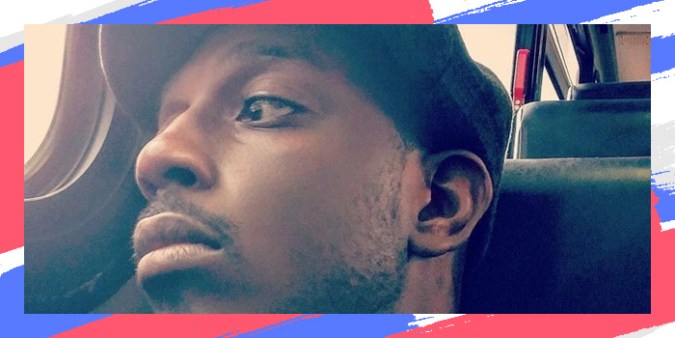
After spending part of his childhood in Panama and returning to his home state of Texas, Ricard “Rico” Enrique Lowe felt out of place. His classmates didn’t know if the Afro-Latino poet was Black or Latino, and those who thought he was merely Latino asked him if that meant he was Mexican. Following in the footsteps of his grandmother and mother, he began pouring his feelings into his poetry.
“When I did write those mini poems back then, a lot of it had to do with that,” he says. “It was the fact that even people who looked just like, who wore the same skin as me, they didn’t consider me black because I had a Spanish name. They didn’t understand what Panama was, which was weird to me. The very first poem I wrote was about that at 11 years old, just talking about how people treated me because my name was different.”
“I gotta stop tip toeing around my identity.”
He began to take his poetry seriously at 17, which is when it began taking a political turn. Lowe, whose his ancestors came from Grenada, Jamaica, and Barbados and played a role in the building of the Panama Canal, doesn’t want this part of history to go forgotten. “A lot of black children who are born pretty much almost a century after the Panama Canal was completed don’t know that their ancestors helped build that canal,” he says. “They don’t know that Black hands came together and put that together for the world. Not only was that present in the beginning stages of my poems, but I still try to talk about those things today.”
Currently, Lowe works as a statistician for the government, but he’s currently looking to get his poetry published. In his early 20s, he set his ambitions aside so that he could find stability. He’s never stopped writing in that time, however, and now has a “big ole bag full of poems.” He’s looking to get his work out to the world, and as he’s done for more than a decade, he’ll continue showing people just who he is through his words. “I gotta stop tip toeing around my identity” have become a guiding force in his life.
“I kinda was tricked when I came to this country to put that away, hide my identity,” he says. “My family has always called me Ricky, but I preferred people to call me Ricky at one point, because I really didn’t want them to know my real name. I didn’t want them to know my name was Ricardo, because I didn’t want people to ask, ‘Why are you black with a Spanish name?’ and then make assumptions.”
Now, he goes by Rico and wants people to know about all parts of his identity. “That’s important when I write,” he says. “I make sure I let people know how proud I am of who I am. I might not always write about something that’s going on in Panama, but I’m aware. And I’m aware not only of what it means to be black, but also what it means to be Latino and the beauty that coexists with those two [identities].”
Check out Rico’s poetry on his Instagram.




